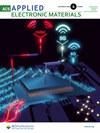Adaptive adjacent context negotiation network for object detection in remote sensing imagery
IF 4.3
3区 材料科学
Q1 ENGINEERING, ELECTRICAL & ELECTRONIC
引用次数: 0
Abstract
Accurate localization of objects of interest in remote sensing images (RSIs) is of great significance for object identification, resource management, decision-making and disaster relief response. However, many difficulties, like complex backgrounds, dense target quantities, large-scale variations, and small-scale objects, which make the detection accuracy unsatisfactory. To improve the detection accuracy, we propose an Adaptive Adjacent Context Negotiation Network (A2CN-Net). Firstly, the composite fast Fourier convolution (CFFC) module is given to reduce the information loss of small objects, which is inserted into the backbone network to obtain spectral global context information. Then, the Global Context Information Enhancement (GCIE) module is given to capture and aggregate global spatial features, which is beneficial for locating objects of different scales. Furthermore, to alleviate the aliasing effect caused by the fusion of adjacent feature layers, a novel Adaptive Adjacent Context Negotiation network (A2CN) is given to adaptive integration of multi-level features, which consists of local and adjacent branches, with the local branch adaptively highlighting feature information and the adjacent branch introducing global information at the adjacent level to enhance feature representation. In the meantime, considering the variability in the focus of feature layers in different dimensions, learnable weights are applied to the local and adjacent branches for adaptive feature fusion. Finally, extensive experiments are performed in several available public datasets, including DIOR and DOTA-v1.0. Experimental studies show that A2CN-Net can significantly boost detection performance, with mAP increasing to 74.2% and 79.2%, respectively.用于遥感图像中物体检测的自适应相邻上下文协商网络
在遥感图像(RSIs)中对感兴趣的目标进行精确定位,对于目标识别、资源管理、决策和救灾响应具有重要意义。然而,复杂的背景、密集的目标数量、大尺度的变化和小尺度的物体等诸多困难使得检测精度不尽如人意。为了提高检测精度,我们提出了自适应相邻上下文协商网络(A2CN-Net)。首先,给出复合快速傅立叶卷积(CFFC)模块以减少小物体的信息损失,并将其插入主干网络以获取频谱全局上下文信息。然后,给出全局上下文信息增强(GCIE)模块,以捕捉和聚合全局空间特征,这有利于定位不同尺度的物体。此外,为了减轻相邻特征层融合时产生的混叠效应,还给出了一个新颖的自适应相邻上下文协商网络(A2CN)来自适应地整合多层次特征,该网络由局部分支和相邻分支组成,局部分支自适应地突出特征信息,相邻分支则在相邻层引入全局信息以增强特征表示。同时,考虑到不同维度的特征层侧重点存在差异,可学习权重被应用于局部和相邻分支,以实现自适应特征融合。最后,在 DIOR 和 DOTA-v1.0 等几个可用的公共数据集上进行了广泛的实验。实验研究表明,A2CN-Net 能显著提高检测性能,mAP 分别提高到 74.2% 和 79.2%。
本文章由计算机程序翻译,如有差异,请以英文原文为准。
求助全文
约1分钟内获得全文
求助全文

 求助内容:
求助内容: 应助结果提醒方式:
应助结果提醒方式:


